Chinese Buddhism refers to the Buddhism religion that was introduced and developed in China. It has a history of over 2000 years. There was no conclusive result when it was brought into China, but people generally believe it was between the Western Han Dynasty (202 B.C. - 8 A.D.) and Eastern Han Dynasty (25 - 220 A.D.). The primary schools of Chinese Buddhism are Han Buddhism, Tibetan Buddhism, and Southern Buddhism.
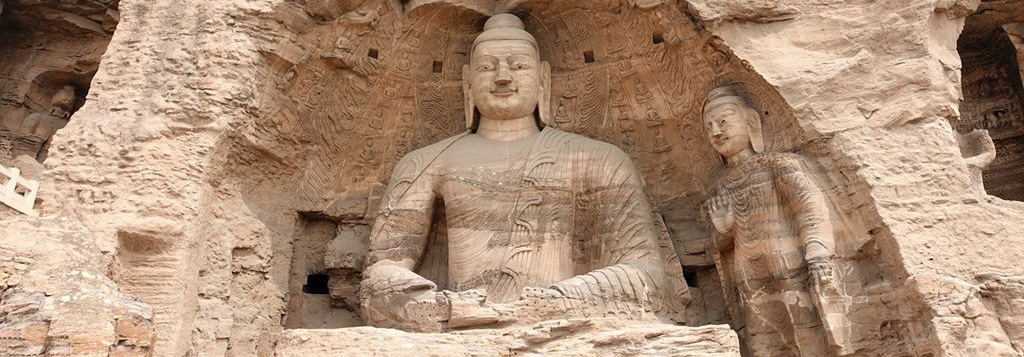
History of Chinese Buddhism
1.Who brought Buddhism to China?
In the first year (2 A.D.) of the reign of Emperor Ai of Western Han Dynasty, Jing Lu was sent on a diplomatic mission to Dayue Tribe. The King of Dayue Tribe from western regions (today’s Xinjiang) sent a person named Yin Cun to dictate the "Fu Tu Jing" for Jing Lu. In 67, Emperor Mingdi of the Eastern Han Dynasty dreamed about the golden men, so he sent people to western regions. As a result, two great Indian monks named Kasyapa Matanga and Dharmaraksa and many Buddha statues and sutra were brought into Luoyang by a white horse. To receive the esteemed guests and valuable Buddhist scriptures, the emperor ordered a special place to be built in Luoyang, the White Horse Temple. In the temple, the first translated version of the Sutra of Forty-two Sections was completed.
2.How did Buddhism spread to China?
The development of Chinese Buddhism has roughly undergone three stages:
1). The sutra translation stage in Han Dynasty, Wei, Jin, Southern, and Northern Dynasties.
2). Flourishing stage in the Sui and Tang Dynasties. At this time, Chinese monks began to found different schools and theory systems based on Indian Buddhism.
3). The integration stage of Chinese Buddhism. In Song, Yuan, Ming, and Qing Dynasties, Buddhism was significantly integrated with Confucianism and Taoism. Meanwhile, Chinese Buddhism became an essential part of Chinese folk customs by the artistic forms of literature, painting, sculpture, and architecture.
3.How did Buddhism influence Chinese culture?
Chinese Art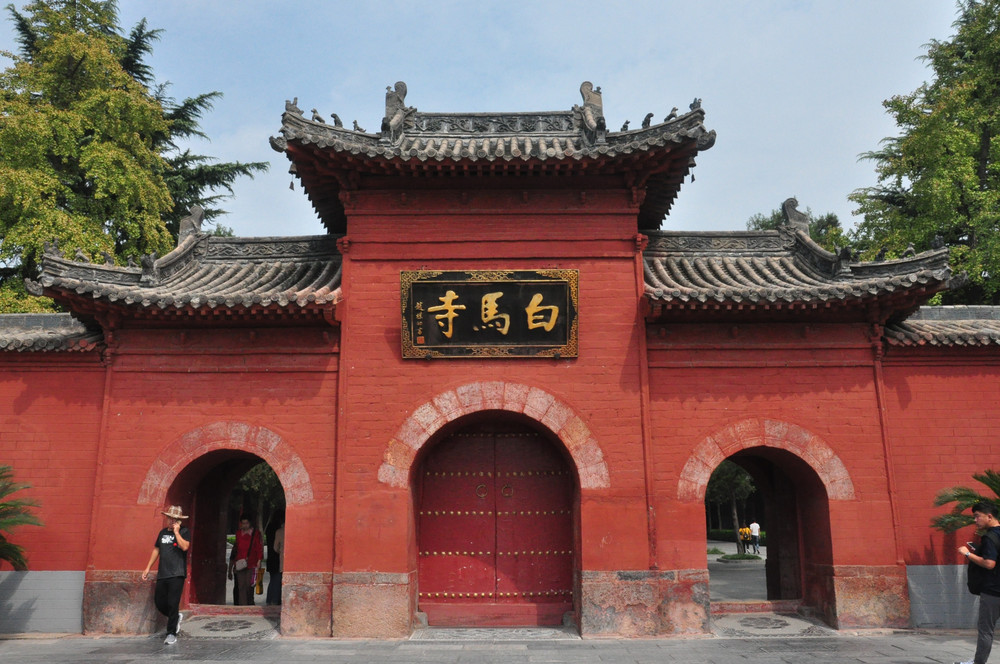
Buddhism's introduction has enriched Chinese art, especially Chinese painting, sculpture, and temple architecture. Since Buddhism was brought into China, the Chinese rulers ordered many caves to be chiseled, including tons of Buddhism murals, sculptures, and statues. The most well-known caves are Mogao Caves, Yungang Caves, Longmen Grottoes, and Maijishan Grottoes.
Buddhism has imposed an indelible impact on Chinese literature. During Buddhism's flourishing times, many poems and scholars studied the Buddhism sutra, befriended famous monks, and created numerous poems and masterpieces relating to Buddhism and Zen. Meanwhile, many monks themselves were great scholars and introduced Buddhism into poems. Besides, Buddhism has marks on the traditional Chinese novels and dramas created in Yuan, Ming, and Qing Dynasties.
Chinese Politics
Buddhism was introduced to China at the request of upper-class rulers in the first place. Thus, it's relatively easy to understand why it influences Chinese politics. During the prime days of Buddhism, the monarchs often use it to consolidate their ruling and stabilize the society. Meanwhile, there are often knowledgeable monks like Xuan Zang who can influence the rulers to make better policies.
Beliefs and Rules of Buddhism
1.What do Buddhists believe?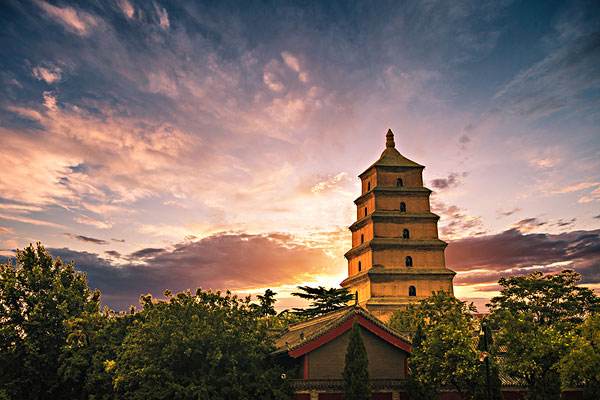
Buddhism is not a religion in a general sense; it's more of a methodology that reveals the universe's truth and the human beings and guides ordinary people to escape earthly suffering and pursue peacefulness.
1. The principles of All phenomena are impermanent, all Dharma is not-self, and eternity is Nirvana, are the Three Seals in Buddhism. The first seal reveals that the essences of the things in the universe are impermanent and ever-changing. The second seal means that there is no such thing as the self, and there is no permanent god. Therefore, people don't have to pursue the idea of the soul. The last seal implies that only the eventual death is real peace.
2. Do good and don't be evil. Buddhism believes that everything has its cause and effect. A person wants good things; he must do good things first.
3. Be compassionate, do good deeds, and serve others. The core idea is that only compassion and mercy can make the mortal world a good place.
2.What Does It Mean to Be a Buddhist?
To be a Buddhist, one must have the ceremony of proclaiming himself a Buddhist, just like taking an oath when joining a party. Only this way can you be a true Buddhist disciple and follow the path of Buddhism. Some people may wonder if there is a way to cultivate Buddhism without conversion. People who have this thought do not have enough faith in Buddhism. They follow their interests and understand the parts they want to believe in and ignore the part they don't. If they fully embrace Buddhism, they must have a strong faith and determination to make Buddhism their sole purpose and pursue it for the rest of their life.
3.What Are the Rules of Buddhism?
The rules of Chinese Buddhism are mainly Buddhist monastic disciplines. 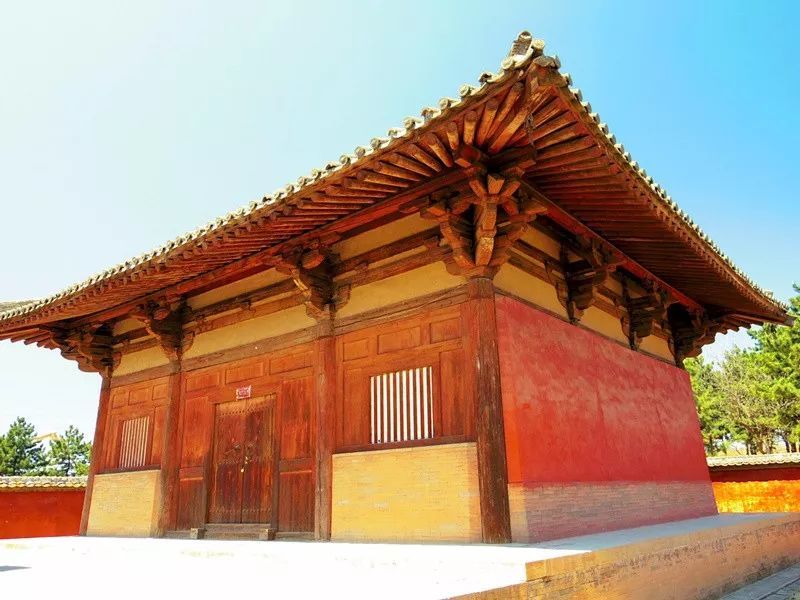 Anyone who becomes a Buddhist disciple needs to abide by the Five Precepts and Ten Good Deeds. The Five Precepts refer to abstaining from killing living things, pilferage, lasciviousness and lust, falsehood, and drinking. The Ten Good Deeds are the specifications of the Five Precepts, which include the behavioral goodness of not killing living things, not stealing and not having lascivious deeds, the verbal virtue of not telling lies, gossiping, speaking curses, or talking frivolous things, and the conscious goodness of no desire, no hatred or complaint, or no distorted thoughts.
Anyone who becomes a Buddhist disciple needs to abide by the Five Precepts and Ten Good Deeds. The Five Precepts refer to abstaining from killing living things, pilferage, lasciviousness and lust, falsehood, and drinking. The Ten Good Deeds are the specifications of the Five Precepts, which include the behavioral goodness of not killing living things, not stealing and not having lascivious deeds, the verbal virtue of not telling lies, gossiping, speaking curses, or talking frivolous things, and the conscious goodness of no desire, no hatred or complaint, or no distorted thoughts.
4.What Do Buddhists Eat?
There are a lot of restrictions on the food Buddhists should have. The most important one is they must only have vegetarian food, which means they can’t eat any meat or eggs and food with intense flavors like garlic, Chinese onions, and leeks. However, there are still many food options like vegetables, mushrooms, and bean products.
Besides, Buddhist monks can’t drink alcohol, smoke cigarette, and have snacks. Alcohol includes all the drinks that can be intoxicating or narcotize people’s nerves, like rice wine, beer, Baijiu, and other alcoholic beverages. The Buddhists do not technically forbid smoking, but it’s a bad habit that may cause psychological dependence. Therefore, smoking is also prohibited in Buddhist monks. Lastly, the rule of no snacking is mainly to cultivate fine comportment.
5.What Can't Buddhists Do?
In terms of personal life, a Buddhist disciple can’t marry or have savings. Buddhism believes that the converted Buddhist disciples shoulder the big responsibility of spreading the Buddhism theories and inheriting Buddhism wisdom. Only when they are entirely unattached can they make accomplishments. Besides, Buddhist disciples are required not to dance, listen to music, take the fancy bed, receive treasures, do business, or tell fortune.
How to Practice Buddhism?
There are three levels to practice Buddhism.
Step 1: Comply with the Buddhism Rules
Step 2: Meditate
Step 3: Seek Wisdom
Schools of Chinese Buddhism
Han Buddhism
Han Buddhism was introduced into China in the Eastern Han Dynasty and rapidly developed in the Southern and Northern Dynasties Period. It entered the prime times in Sui and Tang Dynasties and was integrated with Buddhism and Taoism in Song and Yuan Dynasties. The spreading of Buddhism can be divided into two routes. The first route is the southern route passing southeast Asia, while the second route is the northern route that passes China, Korea, and Japan. Han Buddhism has a lot of schools, and the most popular one is the Mahayana.
Tibetan Buddhism
Tibetans used to believe in primitive Benism until the introduction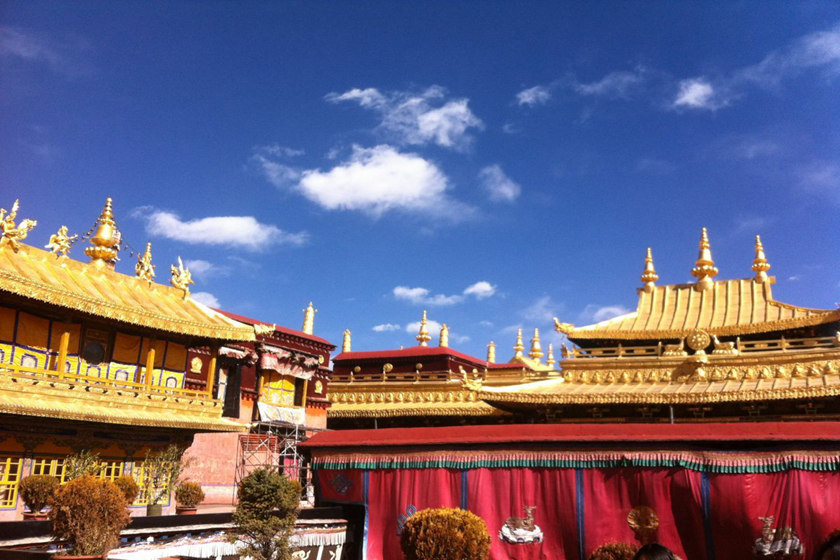 of Buddhism during the mid 7th century to 9th century. In 841, Buddhism was abolished, and it remained abolished for over 100 years until the late 10th century. Although the Tibetan originated from Indian Buddhism, it absorbed some Benism rituals and ideas, forming a unique religion. There are four schools of Tibetan Buddhism nowadays, namely, the rnying-ma-ba (whose disciples wear a red cassock, frock, and mitre), Sakya sect (the wall of such monasteries have red, white, and black patterns that represent Manjusri Buddisattva, Avalokitesvara, and Vajrapani respectively), Kagyu (whose monks wear white frock and tops), and Gelug (the monks wear yellow mitre shaped like peach). With the support of the Ming and Qing governments, Gelug school became the ruling class.
of Buddhism during the mid 7th century to 9th century. In 841, Buddhism was abolished, and it remained abolished for over 100 years until the late 10th century. Although the Tibetan originated from Indian Buddhism, it absorbed some Benism rituals and ideas, forming a unique religion. There are four schools of Tibetan Buddhism nowadays, namely, the rnying-ma-ba (whose disciples wear a red cassock, frock, and mitre), Sakya sect (the wall of such monasteries have red, white, and black patterns that represent Manjusri Buddisattva, Avalokitesvara, and Vajrapani respectively), Kagyu (whose monks wear white frock and tops), and Gelug (the monks wear yellow mitre shaped like peach). With the support of the Ming and Qing governments, Gelug school became the ruling class.
Southern Buddhism
Southern Buddhism was mainly popular in Xishuangbanna, Dehong, Simao, Lincang, and Baoshan in Yunnan. It profoundly influences Dai, Blang, Deang, and Achang people's cultures, politics, and customs. For example, men of the Dai group must be monks at their younger ages for at least once and resume the secular life in 3-7 years. Any man who hasn’t been a monk will be despised.
Chinese Buddhism Nowadays
Buddhism has existed in China for thousands of years. The Buddhism practice is often causally performed in commons; therefore, it’s hard to say precisely how many people in China believe in Buddhism. According to some statistics, at least 187 million people in China believe in Buddhism theories. Geographically speaking, Buddhism is more popular in west and south China, and urban people tend to believe in Buddhism more.
6 Famous Worshiping Place of Buddhism in China
White Horse Temple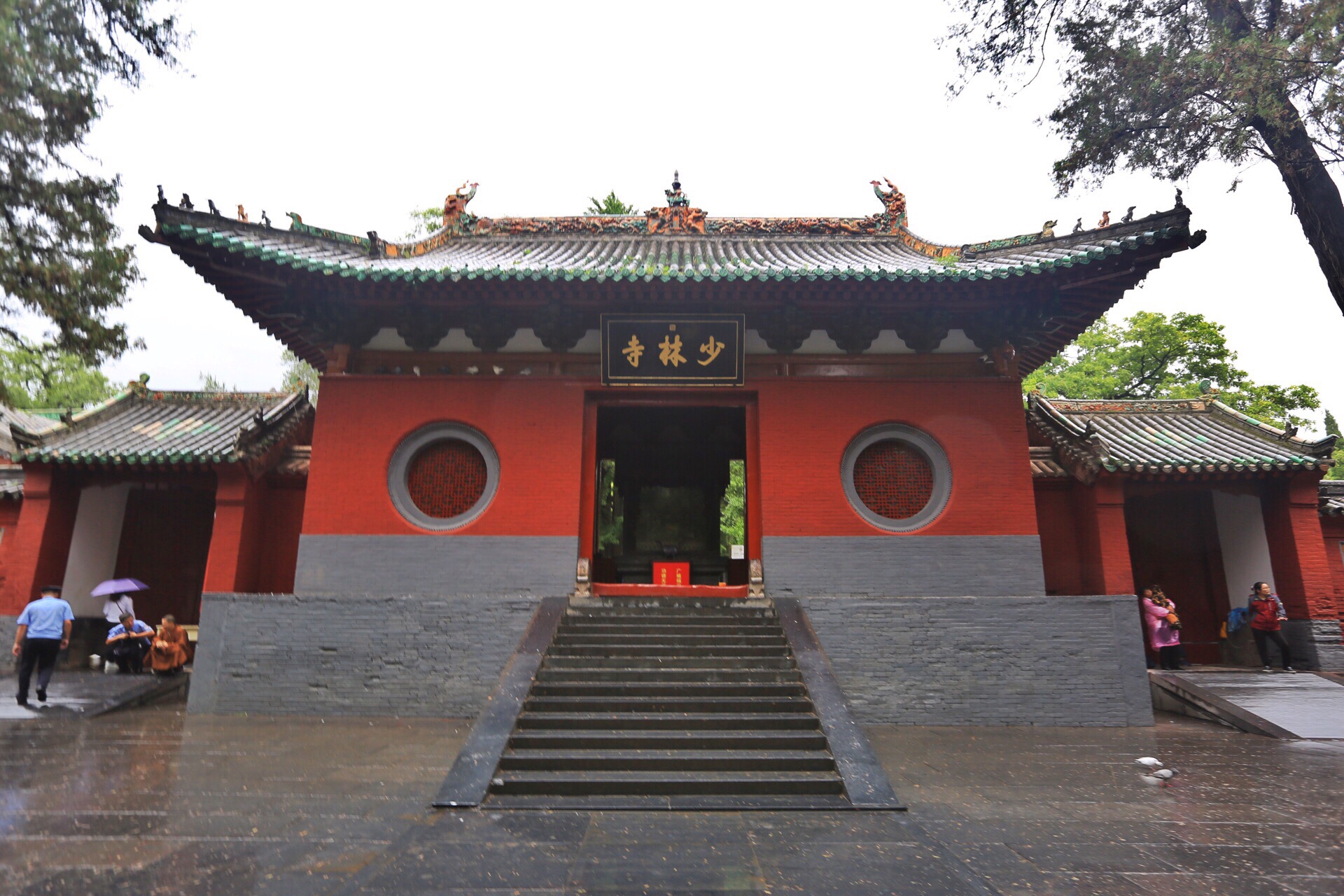
Built in 68, White Horse Temple was the first Buddhist temple in China and the birthplace of Chinese Buddhism. The very name originated from the fact that the white horses were used to carry India's sutra. Since the building of White Horse Temple, it underwent several times of abandonment and renovations, and it reached the prime times in the reign of Wuzetian. Inside the temple, there are many precious Buddhist statues like Buddhist Trinity, Two Heavenly Generals, and Eighteen Arhats.
The Shaolin Temple is the cradle of Chinese Buddhism and Chinese martial arts. Located in the verdant forest of Shaoshi peak inside Mt. Songshan, Dengfeng City, the Shaolin Monastery was inscribed as UNESCO World Heritage Sites in 2010. Emperor Xiaowen initially established the monastery in the 19th year (495 A.D.) of Emperor Taihe in the Northern Wei Dynasty to accommodate the Indian master in another location and the then capital city Luoyang. The whole complex ranges about 57 600 sq meters, and its current abbot is Shi Yongxin. Besides spreading its significant influence in Buddhism, the Shaolin Monastery holds a prestigious reputation in the martial art, especially Shaolin Kung Fu.
Situated in the Da Ci'en Temple in the southern suburb of Xi'an, the Giant Wild Goose Pagoda is one of the most famous Buddhist pagodas in China. The pagoda was a real skyscraper in Chang'an city for over a millennium since it was first constructed in the 7th century A.D. It was a place where people could have a bird's-eye view of the whole city from the top. The story behind it is related to the well-known story of the Monkey King, which has made it pretty famous all over the country.
Foguang Temple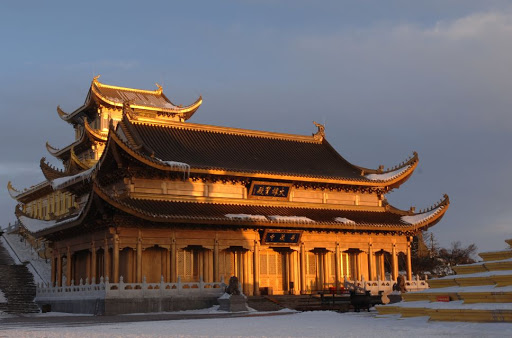
Located on the Wutai Mountain, Foguang Temple was first built during the reign of Xiaowen Emperor (471-499) of the Northern Wei Dynasty when Buddhism was very popular. In 845, the temple was greatly damaged until in 847; it was restored with Buddhism regaining popularity. Nowadays, with the Wutai Mountain, Tang dynasty architectures, sculptures, murals, and calligraphy works, the Foguang Temple is famous again.
Huazang Temple
Huazang Temple is located on the main peak of E'mei Mountain. As the temple halls have golden roofs, people also call the temple Golden Peak, and the peak that the temple is located on is also named Golden Peak. It’s a must-to-visit when you visit E’mei Mountain.
Jokhang Monastery
Jokhang Temple is a Tibetan Buddhist monastery located in the old town of Lhasa. Built by Srongtsen Gampo in 651, the temple underwent a series of renovations in the Yuan, Ming, and Qing dynasties. It’s one of the earliest wooden structural architectures in Tibet, and it has integrated the architectural styles of Tibet, Nepal, and India. Therefore, the Jokhang Temple is an example of Tibetan religious architecture.
Experience Chinese Buddhism with Lilysun China Tours
Join the 2 Days Heritage Tour to Terracotta Warriors and Jingdi's Tomb to Admire the Magnificent Da Ci'en Temple in Big Wild Goose Pagoda
Explore the Shaolin Temple and Longmen Grottoes in 3 Days Terracotta Warriors & Longmen Grottoes Tour
Revere at the Mogao Caves and Giant Buddha Temple in 11 days China Silk Road Trip



 Anyone who becomes a Buddhist disciple needs to abide by the Five Precepts and Ten Good Deeds. The Five Precepts refer to abstaining from killing living things, pilferage, lasciviousness and lust, falsehood, and drinking. The Ten Good Deeds are the specifications of the Five Precepts, which include the behavioral goodness of not killing living things, not stealing and not having lascivious deeds, the verbal virtue of not telling lies, gossiping, speaking curses, or talking frivolous things, and the conscious goodness of no desire, no hatred or complaint, or no distorted thoughts.
Anyone who becomes a Buddhist disciple needs to abide by the Five Precepts and Ten Good Deeds. The Five Precepts refer to abstaining from killing living things, pilferage, lasciviousness and lust, falsehood, and drinking. The Ten Good Deeds are the specifications of the Five Precepts, which include the behavioral goodness of not killing living things, not stealing and not having lascivious deeds, the verbal virtue of not telling lies, gossiping, speaking curses, or talking frivolous things, and the conscious goodness of no desire, no hatred or complaint, or no distorted thoughts.  of Buddhism during the mid 7th century to 9th century. In 841, Buddhism was abolished, and it remained abolished for over 100 years until the late 10th century. Although the Tibetan originated from Indian Buddhism, it absorbed some Benism rituals and ideas, forming a unique religion. There are four schools of Tibetan Buddhism nowadays, namely, the rnying-ma-ba (whose disciples wear a red cassock, frock, and mitre), Sakya sect (the wall of such monasteries have red, white, and black patterns that represent Manjusri Buddisattva, Avalokitesvara, and Vajrapani respectively), Kagyu (whose monks wear white frock and tops), and Gelug (the monks wear yellow mitre shaped like peach). With the support of the Ming and Qing governments, Gelug school became the ruling class.
of Buddhism during the mid 7th century to 9th century. In 841, Buddhism was abolished, and it remained abolished for over 100 years until the late 10th century. Although the Tibetan originated from Indian Buddhism, it absorbed some Benism rituals and ideas, forming a unique religion. There are four schools of Tibetan Buddhism nowadays, namely, the rnying-ma-ba (whose disciples wear a red cassock, frock, and mitre), Sakya sect (the wall of such monasteries have red, white, and black patterns that represent Manjusri Buddisattva, Avalokitesvara, and Vajrapani respectively), Kagyu (whose monks wear white frock and tops), and Gelug (the monks wear yellow mitre shaped like peach). With the support of the Ming and Qing governments, Gelug school became the ruling class. 
